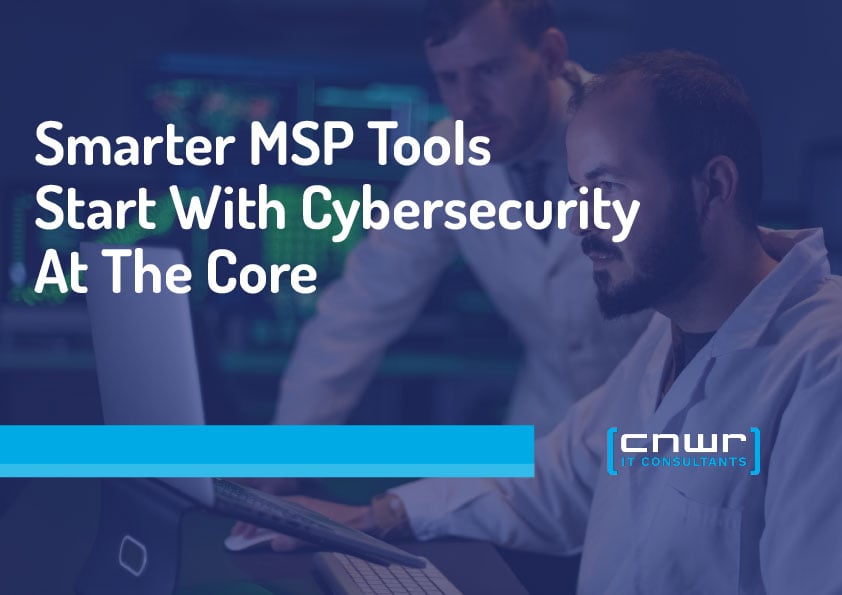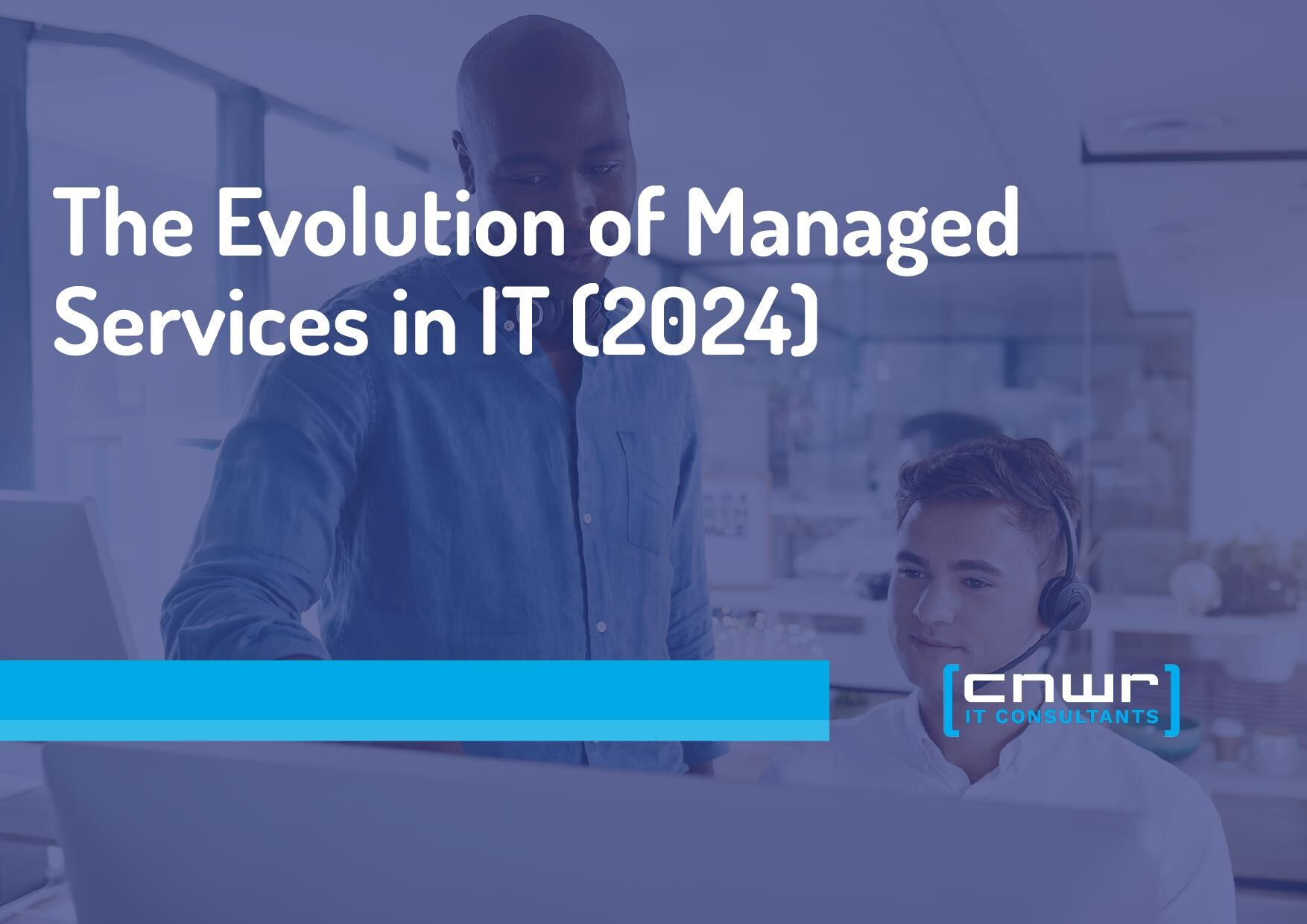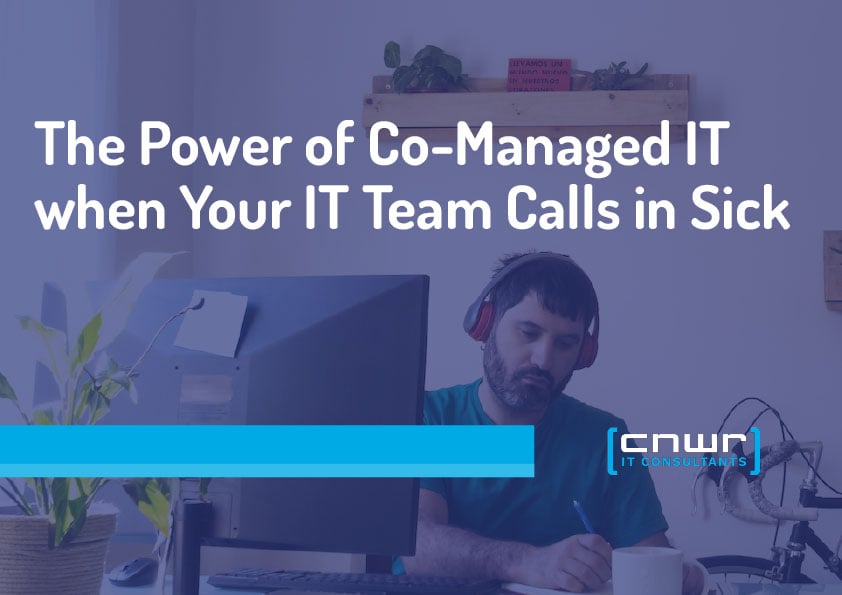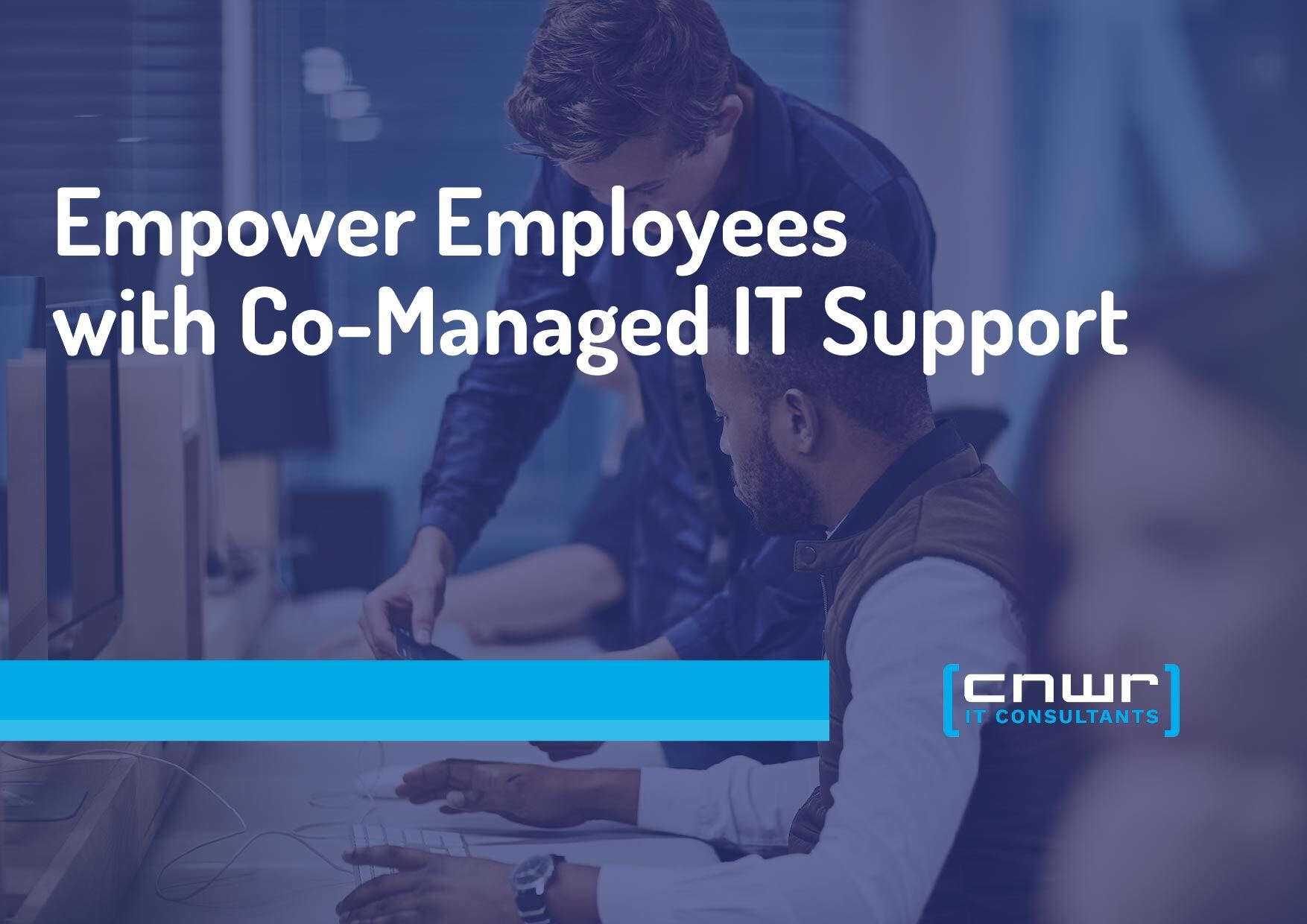Ever try to build a house of cards on a wobbly table? No matter how carefully you place each card, the unstable foundation dooms the project from the start. The same principle applies to your business's IT infrastructure.
You can have the most advanced software and hardware, but without a solid, secure base, you're one unfortunate wobble away from collapse.
This is where managed service providers (MSPs) and their toolsets come into play. Many businesses partner with MSPs to handle their complex IT needs, from daily support to long-term strategy. BUT, not all MSP tools are created equal. The most effective, modern managed service tools don't just add security as an afterthought; they build it directly into their core.
Why does this matter so much? Because a single hour of downtime can easily run into the hundreds of thousands, and in many mid-size firms, exceed $1 million. Integrating security isn't just a best practice…it's essential for survival. This post will explore why the best MSP tools feature built-in cybersecurity controls and how this integrated approach protects your business.
Table of Contents
- What is a Managed Service Provider (MSP)?
- Why Integrated Cybersecurity is Non-Negotiable
- The Dangers of a Fragmented Security Approach
- Key Built-In Cybersecurity Controls in Top MSP Tools
- Partner with Experts Who Prioritize Your Security
- Key Takeaways
- Frequently Asked Questions
What is a Managed Service Provider (MSP)?
A Managed Service Provider (MSP) is an outsourced IT department for your business. Instead of hiring a full-time, in-house team to handle your technology needs, you partner with an MSP. These professionals provide a wide range of computer support services, including server management, network support, and, most importantly, cybersecurity.
Through managed services, an MSP proactively monitors, manages, and secures your IT environment 24/7. This isn't about calling for help after something breaks; it's about preventing problems before they start. A strong MSP relationship can reduce IT costs, boost operational efficiency, and give you access to a level of expertise that might otherwise be out of reach for a small or medium-sized business (SMB).
For a deeper comparison of modern MSP platforms and what truly integrated stacks look like, see our blog: From Options to Outcomes: The Ultimate Guide to Managed Services Tools.
Why Integrated Cybersecurity is Non-Negotiable
Years ago, IT support and cybersecurity could exist in separate silos. Your IT team would make sure your computers worked, and a separate security team would handle the firewalls and antivirus software. Today, that model is dangerously outdated. Cyber threats are more sophisticated than ever, and hackers often exploit the gaps between different systems.
Consider Marks & Spencer’s 2025 cyber incident: attackers entered via a third-party supplier, forcing a 46-day suspension of online orders and an anticipated ~£300M hit to operating profit; a reminder that your defenses are only as strong as your weakest link. This illustrates a critical point: when IT and security are managed separately, you create blind spots that criminals are all too happy to exploit.
The best MSP tools recognize this reality. They integrate security functions directly into their management platforms, creating a unified defense system. This isn't just about convenience; it's a fundamental shift in strategy. Cybersecurity is no longer an add-on…it's the core of modern IT management.
The Dangers of a Fragmented Security Approach
Imagine a security team where each guard uses a different radio frequency. One guard spots an intruder but can't alert the others. The intruder moves freely through the building, exploiting the communication breakdown. This is what happens when your MSP uses a fragmented collection of security tools.
Security “tool sprawl” is real. Studies show organizations juggle dozens of tools (some reports put the average above 80), which fragments data, slows response, and inflates cost. This creates significant problems:
- Siloed Data: Information from one tool doesn't talk to another, making it nearly impossible to get a complete picture of a potential threat.
- Operational Inefficiency: Your MSP's technicians have to jump between dozens of different consoles and dashboards, wasting valuable time that could be spent identifying and neutralizing threats. This finger-pointing delays resolution when every second counts.
- Inconsistent Policies: Applying a uniform security policy across multiple, disconnected tools is a logistical nightmare. This leads to inconsistencies that hackers can exploit.
- Increased Costs: Managing licenses, support contracts, and training for dozens of vendors is expensive and complex. Consolidation simplifies procurement and lowers the total cost of ownership.
A unified platform solves these problems by creating a centralized command center. Everything from threat detection to patch management is handled in one place, ensuring nothing slips through the cracks.
Key Built-In Cybersecurity Controls in Top MSP Tools
So, what do these integrated security controls look like in practice? The best MSP tools don't just offer one or two security features; they provide a comprehensive suite of protections embedded within their core platforms.
Remote Monitoring and Management (RMM) with Security at its Core
RMM tools are the eyes and ears of an MSP, providing real-time visibility into your network. Modern RMM platforms do more than just monitor performance; they actively secure your environment.
- Integrated Patch Management: RMM tools automatically identify and deploy security patches for your software, closing vulnerabilities before hackers can exploit them.
- Built-in Antivirus and Endpoint Detection & Response (EDR): Instead of relying on a separate antivirus program, the RMM platform includes advanced EDR capabilities. It can detect suspicious behavior on an employee's laptop and automatically isolate the device from the network to prevent an attack from spreading.
Professional Services Automation (PSA) with Secure Workflows
PSA software is the brain of an MSP, handling everything from help desk tickets to billing. Integrating security into a PSA tool ensures that best practices are followed at every step.
- Secure Ticketing: When you submit a support ticket, the PSA tool can automatically classify its security risk and ensure it's routed to a qualified security analyst.
- Compliance Automation: A unified PSA platform can help automate tasks required for adhering to regulations like HIPAA or PCI DSS, simplifying audits and ensuring data is protected according to legal standards.
Security Information and Event Management (SIEM)
A SIEM solution acts as a central logbook for your entire IT environment. It collects data from all your devices, servers, and applications, using AI to spot unusual patterns that could indicate an attack. For example, if a user account suddenly tries to access dozens of sensitive files at 3 a.m., the SIEM will flag this as suspicious activity and trigger an alert.
Security Orchestration, Automation, and Response (SOAR)
SOAR takes the alerts from the SIEM and automatically acts on them based on pre-defined playbooks. If the SIEM detects a phishing email, a SOAR tool can automatically block the sender's IP address, delete the email from all users' inboxes, and quarantine any attachments. This automated response happens in seconds, far faster than a human could react.
By combining these tools into a single, multi-tenant platform, an MSP gains a powerful advantage. They can monitor and manage all their clients from one dashboard, apply standardized security policies effortlessly, and respond to threats with unmatched speed and efficiency.
Partner with Experts Who Prioritize Your Security
Choosing a technology partner is one of the most critical decisions your business will make. You need a team that understands that effective IT management and robust cybersecurity are two sides of the same coin. An MSP that relies on a patchwork of disconnected tools simply cannot provide the level of protection required in today's threat landscape.
At CNWR, we have spent decades building our expertise and selecting managed service tools that place security at their very foundation. We don't just fix problems; we build resilient, secure IT environments that empower your business to grow with confidence. Our integrated approach eliminates blind spots, reduces complexity, and provides the proactive defense your organization deserves.
Are you ready to build your business on a foundation of security? Contact CNWR today for a comprehensive security risk assessment.
Key Takeaways
- A Managed Service Provider (MSP) acts as an outsourced IT team, proactively managing and securing your business technology.
- The best MSP tools integrate cybersecurity controls directly into their platforms, rather than treating security as a separate, add-on service.
- A fragmented security approach with dozens of different tools creates inefficiency, data silos, and vulnerabilities that hackers can exploit.
- Unified MSP platforms with built-in security improve threat detection, streamline compliance, reduce costs, and enable faster incident response.
Frequently Asked Questions
- What are the most important security features to look for in an MSP's toolkit?
Look for a provider whose tools offer a unified approach, including Remote Monitoring and Management (RMM) with integrated patch management and Endpoint Detection and Response (EDR), Security Information and Event Management (SIEM) for centralized logging, and Security Orchestration, Automation, and Response (SOAR) for automated incident response. - How can an MSP with integrated security tools help my business with compliance?
By using a unified platform, an MSP can consistently enforce security policies across its entire IT environment. This simplifies adherence to standards like HIPAA, GDPR, and PCI DSS by automating compliance tasks, generating unified reports for audits, and maintaining a clear record of security measures. - Can a smaller business afford an MSP with enterprise-grade security tools?
Absolutely. One of the primary benefits of partnering with an MSP is gaining access to advanced tools and expertise that would be cost-prohibitive to acquire in-house. MSPs leverage multi-tenant platforms, which allow them to offer top-tier security solutions to SMBs at a predictable, manageable monthly cost.




